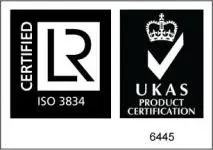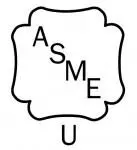An oil mist eliminator, also known as a mist eliminator or demister, is a device that is used to remove droplets of liquid from a gas stream in oil and gas processing. It is an important component in the process of separating oil and gas, as well as in the transportation and storage of these fluids.
Oil mist eliminators typically consist of a wire mesh or coalescing filters that are designed to capture droplets of liquid as they pass through the device. The droplets are then collected and returned to the process stream, while the purified gas is allowed to pass through.
Applications of the oil mist separator
One of the main applications of oil mist eliminators is in the process of oil and gas separation. When oil and gas are extracted from the ground, they often come out of the well as a mixture of the two fluids. To separate the oil and gas, they are typically passed through a separator, which use the differences in density and viscosity between the two fluids to separate them.
Oil mist eliminators are also used in the transportation and storage of oil and gas. When these fluids are transported through pipelines, they are often mixed with other fluids, such as water. This can cause the formation of small droplets of oil and gas that can be difficult to transport. To overcome this problem, pipelines often include oil mist eliminators that remove the droplets of liquid from the gas stream. This helps to ensure that the fluids can be transported more efficiently and with less risk of blockages or leaks.
How it works
In the first stage of separation, the mixture of oil and gas can pass through a wire mesh separator.. This separator can be used as a pre-filter stage to eliminate the bigger droplets and particles. It can be useful to include a knitmesh filter before the coalescing cartrdiges in conditions where the air has a large amount of contaminants.
The coalescing separator uses the difference in density between the oil and gas to separate the two fluids. The oil, which is denser than the gas, will settle to the bottom of the cartridge, while the gas will rise to the top. The coalescing stage is the main part of the oil mist eliminator.
The oil mist eliminator works by capturing the droplets of oil as they pass through the device and returning them to the oil tank. This helps to ensure that the gas stream is free of oil droplets, which can cause problems downstream in the process.
Why to use an oil mist eliminator ?
In the storage of oil and gas, oil mist eliminators are also used to separate oil and gas mixtures. They are installed in the storage tanks and remove droplets of oil in the vapor space above the stored liquid. This prevents the droplets from entering the vapor recovery system, which can cause operational problems and increase maintenance costs.
Oil mist eliminators are also used in other industrial processes such as chemical and petrochemical industries, power generation, and marine industries.
One important aspect to consider in the design and operation of oil mist eliminators is the pressure drop across the device. The pressure drop is the difference in pressure between the inlet and outlet of the mist eliminator. A high pressure drop can result in a decrease in the efficiency of the separator or the compressor and increase the energy consumption, and therefore is an important consideration in the design and operation of the mist eliminator.
Another important aspect to consider is the droplet size that the mist eliminator can effectively remove. The size of the droplets that the mist eliminator can remove is known as the cut-point. The cut-point is determined by the design of the mist eliminator, and the selection of the appropriate mist eliminator for a specific application will depend on the droplet size that needs to be removed.
Contact us to get a complete solution for your oil mist eliminator needs. We can adapt to various situations and requirements.









